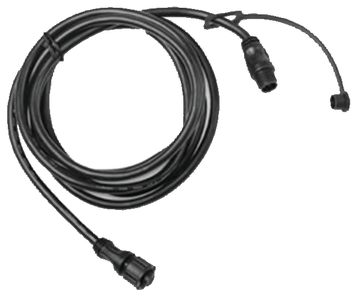

On each end of the backbone, one has to insert a termination resistor.

At one place, 12V DC power has to be supplied to the backbone (again, using a T-connector). The backbone (and the drop cables) have four wires: signal high, signal low, +12V power, and power ground. Each T-connector links to a device (sensor, chart potter, display, radio, etc.) with a “drop cable”. It consists of segments of cable that are joined by T-connectors. The basic network architecture is simple. (Before going on, I apologize to the many Forum members who already know all this. By doing some splicing and soldering, I was able to hang my two Garmin units on the existing SeatalkNG system, as follows. As it turns out, the “proprietary” data networks from companies such as Simrad, Raymarine and Garmin, are essentially identical and, in theory, interoperable. I was going to put together the basic pieces for that, but then I thought: isn’t it kind of dumb to have two networks on one boat? So I did a bit of research and discovered that it would indeed be dumb. The radio picks up AIS signals, and can display the targets on the Echomap, but the two devices have to be connected via a Garmin NMEA 2000 network. I ran it in stand-alone mode on top of the pedestal, i.e., with nothing more than a 12V power connection. Later, I acquired a Garmin EchoMap 54CV CHIRP chart plotter. P.p1 When I installed a Raymarine EV-100 wheel autopilot, I had to set up a simple SeatalkNG data network to link all of the pieces together.


 0 kommentar(er)
0 kommentar(er)
